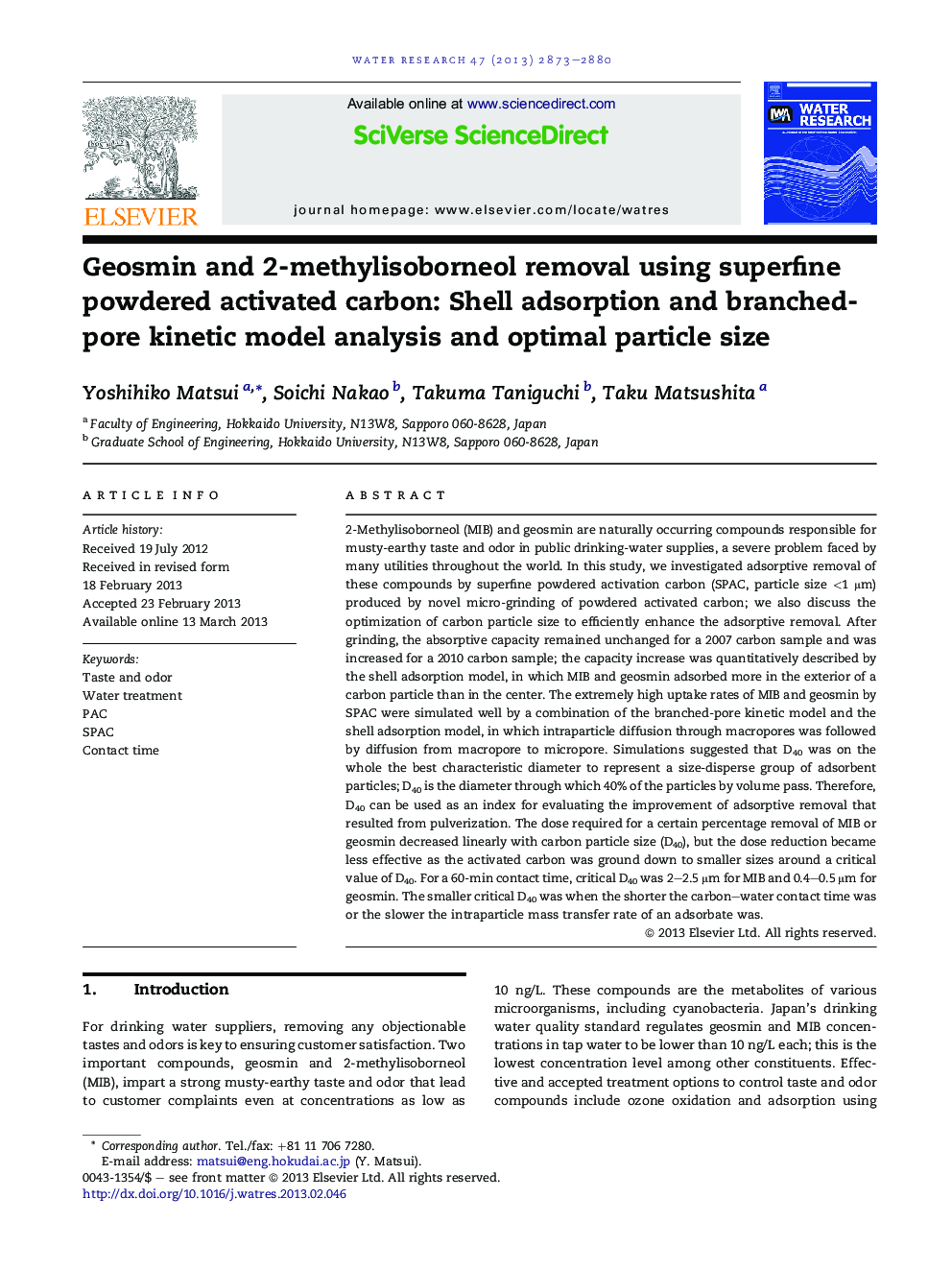| کد مقاله | کد نشریه | سال انتشار | مقاله انگلیسی | نسخه تمام متن |
|---|---|---|---|---|
| 4482254 | 1316852 | 2013 | 8 صفحه PDF | دانلود رایگان |

2-Methylisoborneol (MIB) and geosmin are naturally occurring compounds responsible for musty-earthy taste and odor in public drinking-water supplies, a severe problem faced by many utilities throughout the world. In this study, we investigated adsorptive removal of these compounds by superfine powdered activation carbon (SPAC, particle size <1 μm) produced by novel micro-grinding of powdered activated carbon; we also discuss the optimization of carbon particle size to efficiently enhance the adsorptive removal. After grinding, the absorptive capacity remained unchanged for a 2007 carbon sample and was increased for a 2010 carbon sample; the capacity increase was quantitatively described by the shell adsorption model, in which MIB and geosmin adsorbed more in the exterior of a carbon particle than in the center. The extremely high uptake rates of MIB and geosmin by SPAC were simulated well by a combination of the branched-pore kinetic model and the shell adsorption model, in which intraparticle diffusion through macropores was followed by diffusion from macropore to micropore. Simulations suggested that D40 was on the whole the best characteristic diameter to represent a size-disperse group of adsorbent particles; D40 is the diameter through which 40% of the particles by volume pass. Therefore, D40 can be used as an index for evaluating the improvement of adsorptive removal that resulted from pulverization. The dose required for a certain percentage removal of MIB or geosmin decreased linearly with carbon particle size (D40), but the dose reduction became less effective as the activated carbon was ground down to smaller sizes around a critical value of D40. For a 60-min contact time, critical D40 was 2–2.5 μm for MIB and 0.4–0.5 μm for geosmin. The smaller critical D40 was when the shorter the carbon–water contact time was or the slower the intraparticle mass transfer rate of an adsorbate was.
► Adsorption was analyzed using branched-pore kinetic and shell adsorption models.
► The required carbon dose decreased linearly with carbon particle size.
► Dose reductions leveled off in the vicinity of a critical particle diameter D40.
► Critical D40 was 2–2.5 μm for 2-methylisoborneol and 0.4–0.5 μm for geosmin.
Journal: Water Research - Volume 47, Issue 8, 15 May 2013, Pages 2873–2880